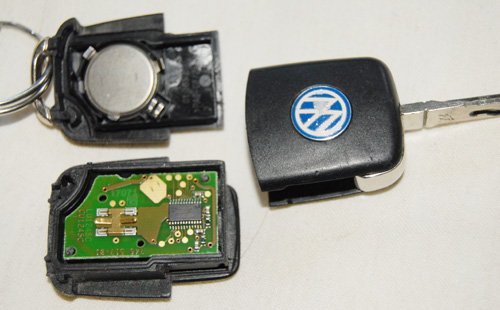VW POLO EPC LIGHT
Most VW Polo, Golf, Audi, Passat and Skoda vehicles and probably every other VAG cars appears to have problems lately. In one sentence, the most common of these problems seems to be on obd diagnostics the culprit being the wiring that interconnect all the electronic modules, aka the OBD II / CANbus. Virtually every car diagnostic test done on several different VAG cars produced the same faults. This implies that they are common, since they are recurring on different owners cars. I can relate to this from my Television engineering days, when several same-make and same-model televisions all appeared to give the same problems. These VAG cars all seemed to have Intermittent / Implausible messages on the Data Bus and its highly unlikely that it could be the electronic modules themselves that are intermittent. Should this be the case, each and every one of these VAG cars then needs to be recalled because it looks like a defective design or assembly line problem. But that's wishfully thinking on my part which will obviously be met with and answer like - highly unlikely.Wiring harnesses and cable assemblies for electrical buses interconnecting several MOSFET fast switching electronic modules each having an edge connector / plug whether it is gold plated or not, has parasitic capacitance. Add this to the edge connector resistance and crimped wire contacts inside the plugs makes for interesting intermittent connections. The following list are faults /errors that showed up on diagnostic tests on cars with EPC light problems, which gives you some idea what I'm referring to. I've abbreviated "Powertrain Data Bus" to PDB: in order to stop each fault from running onto two lines. Excessive comms errors and internal control module memory error intermittent are common faults caused by wiring harnesses.
SCAN TOOL ERROR CODES
1) 01312 - Powertrain Data Bus: - Faulty2) 18034 - PDB: error P1626 Missing Message from TCU (Transmission Control Unit)
3) 18043 - PDB: error P1635 Missing Message from A/C Controller
4) 18044 - PDB: error P1636 Missing Message from Airbag Controller
5) 18058 - PDB: error P1650 Missing Message from Instrument Cluster
6) 18270 - PDB: error P1862 Missing Message from Instrument Cluster
7) 18055 - PDB: error P1647 Check Coding of ECUs
8) 18056 - PDB: error P1648 Failure
9) 18045 - PDB: error P1637 Missing Message from Electric Load Controller
A) 18097 - PDB: error P1689 Implausible Message from Elect. Load Controller
B) 18104 - PDB: error P1696 Implausible Message from Steering Column Controller
C) 18107 - PDB: error P1699 Missing Message from Steering Wheel Electronics
D) 18057 - PDB: error P1649 Missing Message from ABS Controller
E) 18259 - PDB: error P1851 Missing Message from ABS Controller
F) 18090 - PDB: error P1682 Implausible Message from ABS Controller
G) 18261 - PDB: error P1853 Implausible Message from ABS Controller
Implausible signal means that it is "intermittent", even intermittent at the time the diagnostic tester was interfacing with the ECU's, TCU's, STC's ABS's, A/C etc... "Missing Message" implies absolutely no contact (Open Circuit) with the respective modules at the time of testing. Since VAG cars became inundated with electronic modules, our individual cars each have a few hundred more electrical connections than the previous generation of cars each and everyone of them subject to the tresses and strains of the bumps on uneven roads and spirited driving. Add engine heat, steam, dampness and other weather conditions to this equation and suddenly these connections become tarnished over time. Tarnished connections are certainly not electrically sound and one way to clean these contacts is with contact spray but graphite or a grey ink rubber would be more effective to clean the tarnish off the gold plated PCB edge connectors. The Bentely VW manual suggest replacement of the whole wiring harness if any problems arise but it comes at a cost of $798.00 and that's for a 2007 VW Polo highline. I would hate to know what it would cost for a 2013 Volkswagen Touareg or 2013 Volkswagen Amrok not to mention 2013 Audi A8 or Audi TT .
VAG cars are really nippy and a joy to drive and I'm certain the bulk of VAG car owners enjoy spirited driving but many many VAG car driver probably regret this since they only experienced EPC light troubles after they did some real spirited driving. I know this is absolutely true for Audi TT drivers who complained that their cars were fin until they gave it a nice workout. It is obvious centrifugal force, torque, tension, flexing, wind resistance and inertia plays their respective roles on the plugs and connectors. The EPC Light problems above, D through G appears to dictate that the ABS Controller is faulty or its edge connector / plug is faulty or the harness is faulty. B through C suggest that the Steering Wheel Controller is faulty or its edge connector / plug is faulty or the harness is faulty is causing the EPC light to light up. Numbers 5&6 seems to favour the Instrument Cluster as faulty or its edge connector / plug is faulty or the harness is faulty which causes the EPC light to light up. Number 9 and letter A seems to blame the Electric Load Controller for triggering the EPC light. Numbers 1-4 and 7&8 seems to suggest some other electronic module caused the EPC light to light up. All these modules have one thing in common, they are all associated with the Powertrain Data Bus. In essence any module associated with the Powertrain Data Bus can cause the EPC light on VW Polo or other VAG cars to trigger.
 |
| THE SECRET TO MAKING MONEY ONLINE. |
More on EPC light DEMYSTIFIED....
